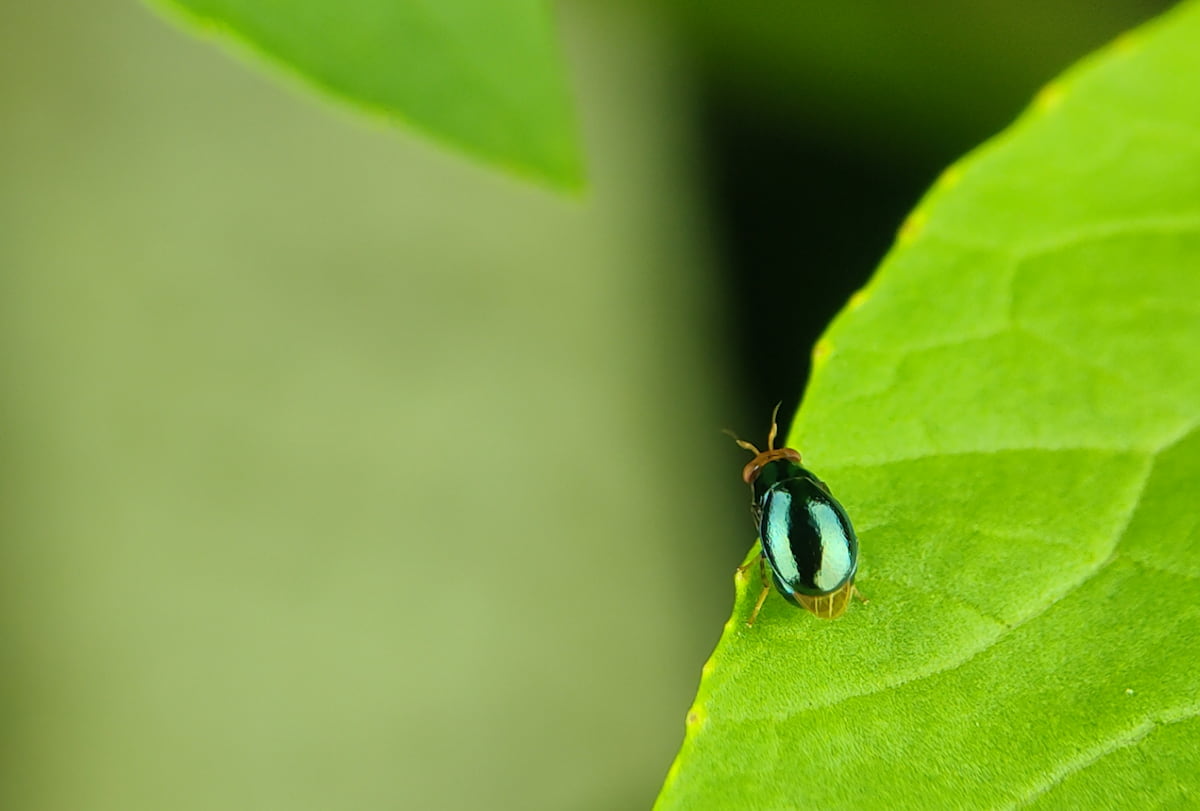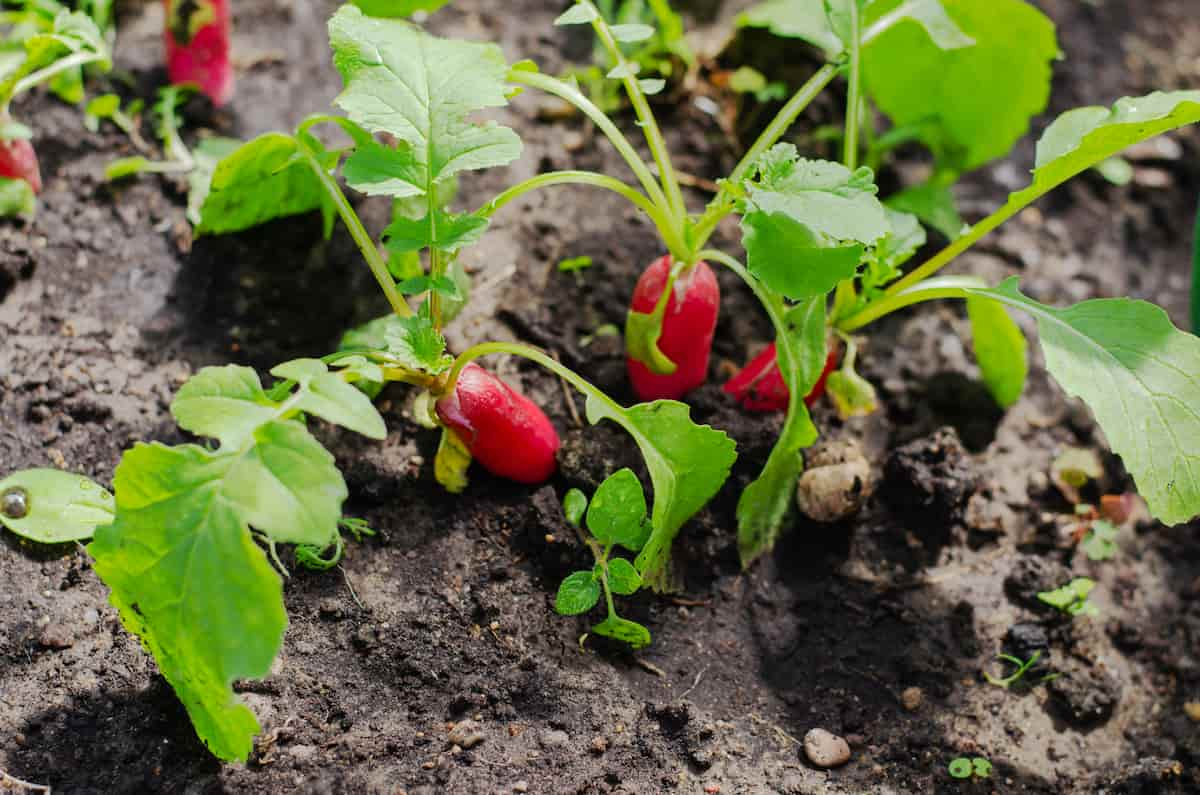Flea beetles are a common pest of many vegetable crops, including radishes. Flea beetles are small jumping beetles that feed on the leaves of plants, leaving small holes that can eventually kill the plant. They are particularly attracted to young, tender plants and can cause significant damage in a short amount of time.

Flea beetles typically overwinter in plant debris or soil and emerge in the spring to feed on young plants. They are known to be attracted to certain plants, such as radishes, and can quickly establish populations in the field.
Flea Beetles Management in Radish
The Life Cycle of Flea Beetles
- The four lifecycle phases of fleas are egg, larva, pupa, and adult.
- Both men and females mature for reproduction after their first blood meal.
- About 50% of flea populations are eggs, followed by 35% larvae, 10% pupae, and 5% adults.
- Eggs can be deposited on a host or substrate and hatch in two days or two weeks.
- Larvae can develop in 4 to 18 days and eat organic substances.
- Pupae create silken cocoons that they can later fashion into adult forms when vibrations, heat, and carbon dioxide are present.
- Fleas can produce 5000 or more eggs during their two to three-month lifespan as adults.
- The ideal temperature and humidity for the flea life cycle are 21 to 30 °C and 70 %, respectively.
Factors Favoring Population Increase in Flea Beetles in the Field
- In leaf litter, hedgerows, windbreaks, and wooded regions, flea beetles spend the winter as adults.
- Early spring is when adult flea beetles become active and deposit one or more eggs in small crevices in the soil or on the leaves of various ornamental, edible, and flowering plants.
- The roots of recently planted seedlings are consumed by the tiny white larvae that emerge from the eggs.
- Flea beetles usually have one to two generations per year.
Identification of Flea Beetles in the Radish Field
- Except for the spinach flea beetle, which is 1/4 inch long, most mature flea beetles are tiny (1/16 to/8 inch long).
- Flea beetles come in various colors, including metallic gray, blue, brown, black, copper, and striped varieties.
- Large hind legs are used for jumping by flea beetles, particularly when they are disturbed.
- They can seriously harm harvests because they feed on plant leaves.
- Larvae can be seen eating plant roots.
Damage Symptoms of Flea Beetles in Radish Field
- Small, round holes in the leaves: Flea beetles feed on the leaves of radish plants, causing small, round holes that can be seen on the surface of the leaves.
- Shothole appearance: The feeding damage caused by flea beetles can create a shothole appearance on the leaves.
- Stunted growth: If flea beetle populations are high, they can cause stunted growth in the radish plants.
- Wilting: Severe flea beetle damage can cause the radish plants to wilt and eventually die.
- Defoliation: In severe cases, flea beetles can defoliate radish plants by feeding on most foliage, reducing yields and crop losses.
- Flea beetle larvae: Flea beetles also have larvae that can feed on the roots of radish plants, causing damage and reducing the plant’s ability to take up nutrients.
In case you missed it: Flea Beetle Management in Eggplant: Symptoms, Treatment, Cultural, Chemical, Natural, and Organic Control

Flea Beetles Management in Radish by Cultural Method
- Crop Rotation: Rotate your crops to avoid planting radish in the same spot it was planted the year before. This may aid in preventing the growth of flea beetle populations.
- Row coverings: Using floating row covers to stop flea beetles from feeding on young radish plants. Once the plants are large enough, the coverings should be taken off.
- Early planting: Plant radish as soon as possible to help the plants mature and grow before flea beetles become active. Feeding by flea beetles may be less detrimental as a result.
- Trap cropping: To keep flea beetles away from the radish plants, grow a trap crop, such as mustard, close to the radish crop. Once infected, the trap crop can be destroyed or treated with insecticides.
Flea Beetles Management in Radish by Biological Method
- Natural parasites and predators: Encourage natural parasites and predators like parasitic wasps, lacewings, and ladybugs. These insects can regulate populations of flea beetles.
- Bacterial control: A helpful bacterium called Bacillus thuringiensis (Bt) can kill flea beetle larvae. In place of chemical pesticides, it provides a safe and all-natural option.
Flea Beetles Management in Radish by Chemical Method
- Permethrin – a synthetic pyrethroid insecticide that targets the nervous system of insects. It is commonly used for flea beetle control in radish and other crops.
- Imidacloprid – a systemic insecticide that can be applied to the soil or foliage…
Flea Beetles Management in Radish by Organic/Natural Method
- Neem oil – an extract from the neem tree that has insecticidal properties. It is a relatively safe and effective botanical insecticide for flea beetle control in radishes.
- Kaolin clay: Dust the radish plants with kaolin clay, which creates a barrier on the leaves and repels flea beetles.
- Garlic spray: Make a garlic spray by blending garlic cloves with water and spraying it on the radish plants. Garlic contains natural insecticidal properties that repel flea beetles.
- Handpicking: Check the plants regularly and handpick any flea beetles. This is especially effective when the population is small.
- Soil management: Improve the soil quality by adding compost or other organic matter, which can increase the plants’ resilience to flea beetle damage.
Preventive Measures for Control of Flea Beetles
- Garden debris, such as fallen leaves and dead plant material, can shelter pests like flea beetles. Flea beetles can overwinter in debris and emerge in spring to attack your plants. Therefore, removing garden debris can reduce the risk of flea beetle infestations.
- Monitor plants: Regular plant monitoring is essential to identify pest problems early. By monitoring your plants regularly, you can catch signs of flea beetle damage, such as small holes in leaves, stunted growth, and wilting, and take action before the damage becomes severe.
In case you missed it: Hornworms Management in Eggplant: Symptoms, Treatment, Cultural, Chemical, and Biological Control

Conclusion
Flea beetles can cause significant damage to radish plants, leading to reduced yields and crop losses. However, by implementing preventive measures such as cleaning up garden debris, monitoring plants for signs of damage, using healthy plants, rotating crops, using mulch, using row covers, introducing natural enemies, and using organic pest control methods, gardeners can effectively manage flea beetle populations and maintain healthy radish plants.
- Deworming Schedule for Dogs/Puppies: A Beginners Guide
- How to Prevent and Control Parasites in Goats
- Beneficial Insects in Pest Management
- Natural Solutions for Pest Control in Flower Gardens
- Types of Fungicides Used in Agriculture
- Common Issues in the Fruit Development Stage of Pomegranate Farming
- Fruit Development Issues in Papaya: Easy Solutions and Treatment
- Soil-Borne Diseases and How to Protect Your Plants
- Practices to Prevent Disease Spread in the Garden